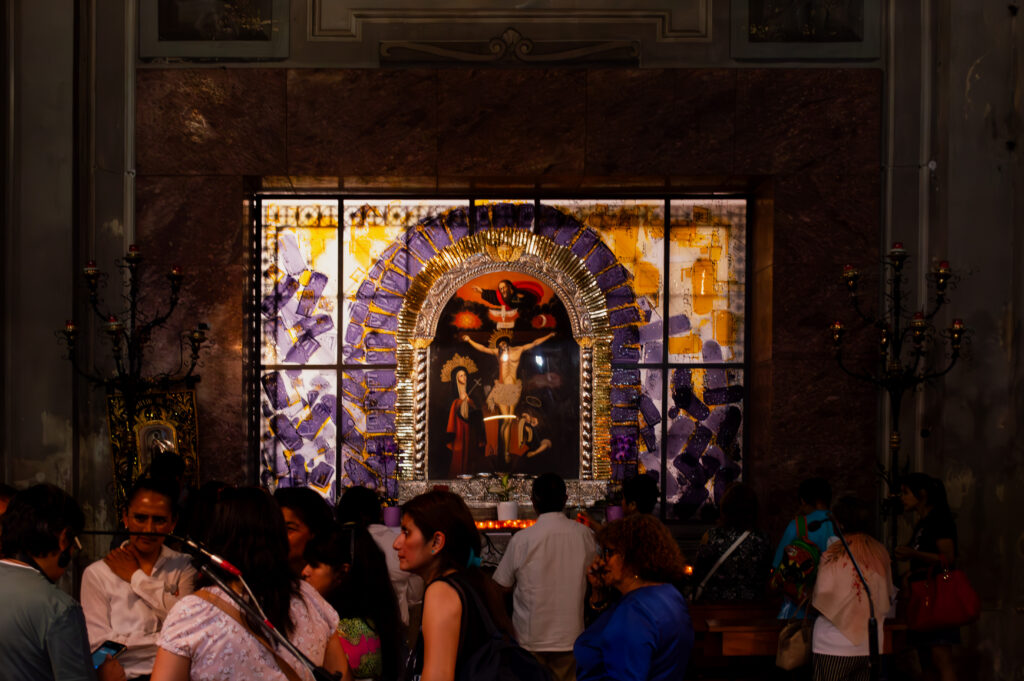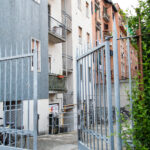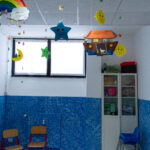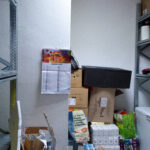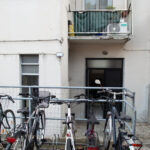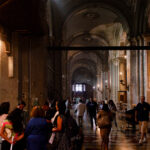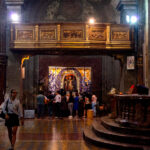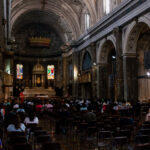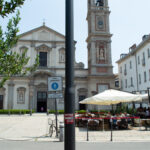Milan
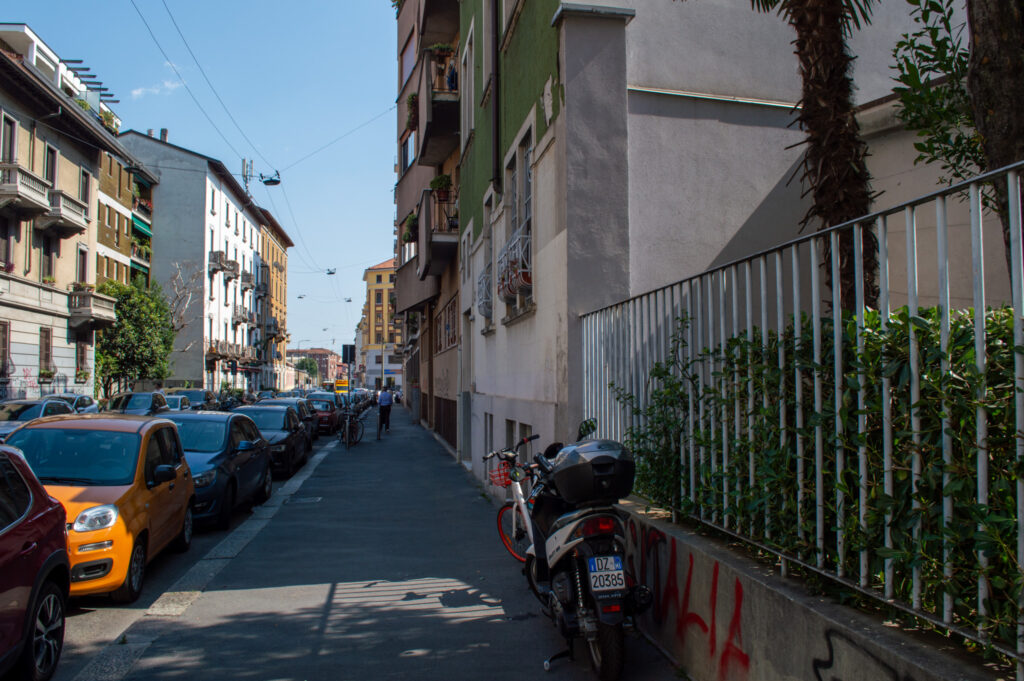
It’s drizzling as I get off the train in Milan. Tired and aching from a one day detour in Venice, but too lazy to look up how to take the light rail, I decide to walk thirty minutes to meet Samuele. He is an academic researcher at the University of Milan specializing in ethnic churches and my point of contact in the city. I walk, water particles expanding the volume of my hair by the minute. The city is very well ordered, which is to say I don’t have to stress about being run over. Most buildings in the center are clad in materials that easily drove construction costs up beyond what an American client would find prudent. Looking around I wonder if the per-capita of architects and designers in Milan is higher than most cities. It probably is. Men in tailored suits walk past me followed by foppish young men who are either fashion models or should be fashion models. Streets are flooded with designer brands I typically only see online, and I am dressed in a t-shirt and baggy jeans.
I arrive to the social sciences department and some students point me in the right direction. I meet Samuele and am invited to sit in on a meeting with some other migration academics. It is all in Italian, so I do not understand the vast majority of what is said. My theory that Italian is understandable to Spanish speakers turns out to be incorrect. A light lunch follows where I meet Maurizio Ambrosini, head of migration studies at the university and something of a celebrity in the field. I had initially reached out to him via email, to which he graciously put me in contact with Samuele. He is not only a heavy hitter within Italian migration studies, he’s also very kind and humble. His help was absolutely pivotal to my time in Milan.
Samuele and I head out and walk for the next hour or so. I have to give a disclaimer that a lot of what was explained to me by Samuele and others about Italian immigration norms might have been misunderstood by myself. The following is how I understood things, which is very possibly off due to the language barrier and my own comprehension of what was being relayed. Anything that is incorrect is entirely on me, not on Samuele who was kind enough to go through the trouble of explaining his work in his second language.
Migration to Italy from other countries is a recent phenomenon, stretching back around four decades. Prior to this, migration largely happened from Southern Italy to Northern regions like Lombardy, where Milan is situated. Most immigrants today come to work as laborers doing jobs that native Italians don’t typically want to do. One of the most common sectors is the live-in caregiver industry which has grown alongside Italy’s elderly population. Other jobs immigrants do are construction and other forms of manual labor. We pass some Latino construction workers digging into what will soon be a new train station. Construction halts the next few days for Berlusconi’s funeral.
On Saturday I go with Samuele to meet a Protestant Latino church towards the outskirts of the city. I spot a large brick church at the end of the street where we park, believing that this is where we are headed. Our point of contact is Jessica, a young woman born in El Salvador who has spent most of her life in Italy. She is a member of the congregation we are going to and is involved in a group dedicated to helping end abuse towards women. She meets us and we walk away from the brick church and into an apartment complex’s parking lot. A ramp takes us to a little hallway which leads to a half-submerged basement lined with red chairs. Windows at the periphery let in light which bounces off the stark white floor. The sign above the pulpit is written in Spanish, “Tiempos de Restauracion”, Times of Restoaration. Samuele and I sit down at the back of the room.
The congregation is made up mainly of people from El Salvador, Peru, Ecuador, and Bolivia. At 4:00 PM, an hermana begins reading a Psalm. Jessica hands me a Bible and I begin to search for the verse. After the scripture, a prayer. People become animated to varying degrees. The order of events is more or less identical to what I grew up with, verse-prayer-worship-offering-sermon-worship-prayer. Three hermanas sing and one plays the keyboard, the classic offbeat octave rhythm (1) any Latino Protestant knows. During one of the songs, Jessica tells me that I’ll have five minutes to explain my project in front of the congregation. I was under the assumption this would happen later with a small group of people seated in some sort of semicircle. My Spanish is rusty, that special sort of American oxidation that quickly reveals I am Chicano. I go up and say my piece, hoping it made sense, and head back to my seat. Samuele gives a thumbs up. Then the pastor gives a sermon and the closing procession of events.
After this, Jessica takes me around to the various rooms which make up the church. There is a children’s room that doubles as a meeting space, a pastor’s office, and a storage room for the food bank amongst other things. Jessica and Samuele explain that they are not officially registered as a church, instead legally existing as something similar to an NGO. Apparently, none of the Latino churches (I’m not sure if they meant just in Lombardy or throughout Italy) are officially registered as religious institutions. Samuele explains that this is a very complicated topic that he has written about extensively (link to his articles). I won’t pretend to know more about the situation than I have written here, so please look into Samuele’s writing if you are interested to know more.
I am then introduced to the pastor who gave the sermon today, a man wearing glasses named Yvan. We also meet one of the other pastors, an older man who is setting up the childrens’ room for a meeting. Pastor Yvan walks around with us explaining that owing to the size of the church every space must be multifunctional. I can’t help but think about the concept of flexibility as it applies to architecture, open floor plans whose potential for use is only limited by the imagination of the users. We stop in the large open room that a few minutes ago functioned as the sanctuary. Some of the church’s teenagers are stacking chairs and sweeping the floors, transforming the space in a manner of minutes. The room is about to be used for a youth worship session, and the acoustic guitars are being tuned.
Samuele, Jessica, Pastor Yvan, a man named Edwin, and I sit down. I ask Pastor Yvan about the history of the church, to which he redirects the question to Edwin. Here are the facts as best as I could scribble them in my notebook: The church has been in this location for some twenty-three years, but it was established long before that. Back in the 1980s a small wave of immigrants mainly from El Salvador came to Milan. A larger wave fully cementing the Salvadorian community came in 1990 when Italy hosted the FIFA World Cup. It was initially single people, many of whom had left their family back home. A lot of the work in those days as today was caring for elderly Italians. A small Protestant contingency had been meeting in those early days somewhere on Via Venosa, and the main person in charge was an Argentinian pastor. At some point, the pastor’s daughter married an Italian man and the church’s character shifted, prompting members such as Edwin to form their own path and find a new space.
By the late 1990s Edwin was living in an apartment above what is now the church. Back then, the basement was a stained glass workshop. The apartment complex changed ownership around 1998, with some people leaving and others being asked if they wanted to buy their apartments. The basement at this point was empty, and Edwin asked if he could buy it. This next part is a little hazy because I had trouble keeping up with the Italian rules and customs being explained. Apparently, Italian rules dictate that in order to buy property you need to show a specific number of pay stubs. In this case, five stubs were needed, so five brothers from the church combined their stubs and bought it communally. After this point, some complications arose which required a lawyer. My understanding is that since it was going to be used as a church, a separate set of rules had to be adhered to. Edwin reiterates here that Latino Protestant churches in Lombardy function informally, which is to say as the Italian version of non-profit organizations. The church was also non-denominational, throwing another obstacle in their path. Eventually, the paperwork went through and the church found its permanent home.
The church today is itself a multi-ethnic Evangelical congregation drawing from the traditions of various denominations and liturgical backgrounds. Combining various Protestant traditions is a difficult task, as Edwin admits himself, and is largely responsible for the splintering into fifteen other churches. From this one church, sixteen more have sprung up over the years both in Milan and other Italian cities. Edwin also relays that discrimination was more harsh in the 90s, so migrants had to rely on each other to find work and accommodations. The church was sort of a place to network and get your needs met.
Samuele then asks what the church did during lockdown. The answer is Zoom and Facebook Live. Eventually, a Whatsapp prayer group started, surviving this day due to being perfect for the hermanas who work as live-in caretakers and can’t go out on weeknights. There’s also mention of a group who believed that God’s law was superior to the Italian state. These members broke off in order to thwart lockdown protocols and meet in person.
After this, I meet a member of the church’s youth group named Juan. He describes retreats, games, worship, meetings–activities strikingly identical to any church in the United States. Jessica then introduces me to Zaida, one of the hermanas who’d been in the congregation the longest. Zaida’s mother had come to Milan in the early 90s, working to establish herself before bringing her in 1993. Zaida didn’t have the means to come with documentation, so she went from Lima to Budapest, then to Switzerland. Stuck at the border, Zaida realized she’d have to walk across into Italy but didn’t know what to do with her luggage. An hermano from the church heard about this dilemma and drove to the Swiss border to pick up her luggage. Now unencumbered, Zaida walked across into Italy. In those days there was very little assistance for migrants. An organization called Naga was basically the only organization back then, and schools had no assistance whatsoever. The church was there to fill in the gaps and help where it could. Zaida tells me that the original pastor, the late Pastor Daniel, made an effort to help mothers bring their children to Italy. I am reminded of the “madonna and child” theme you find in every art museum, many of which I’d seen in Milan’s Pinacoteca di Brera.
1: oneANDtwoANDthreANDfourAND
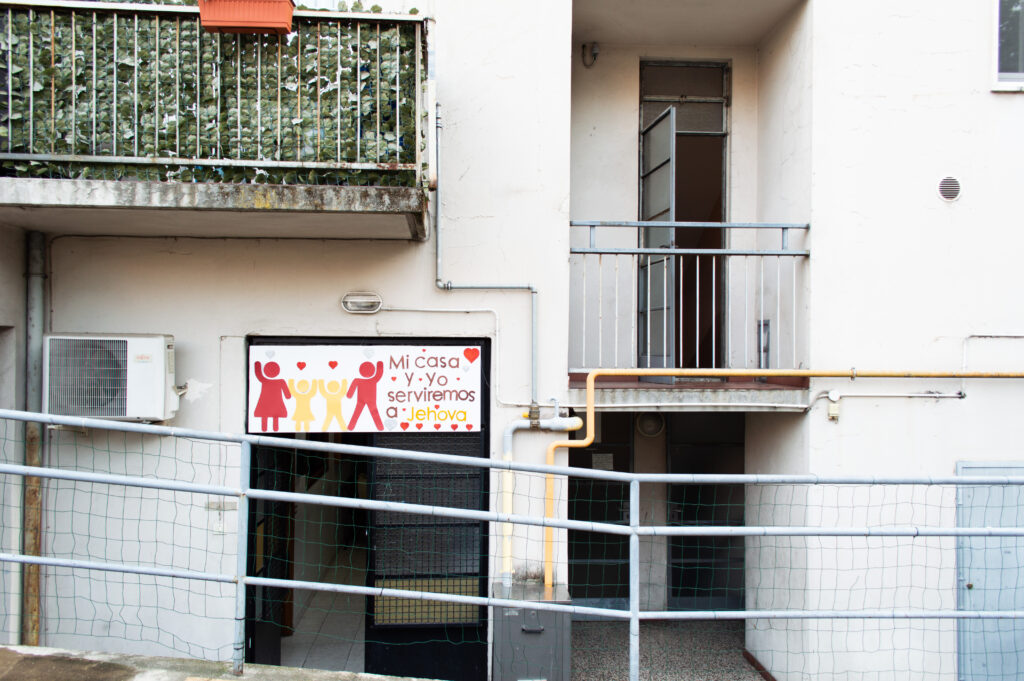
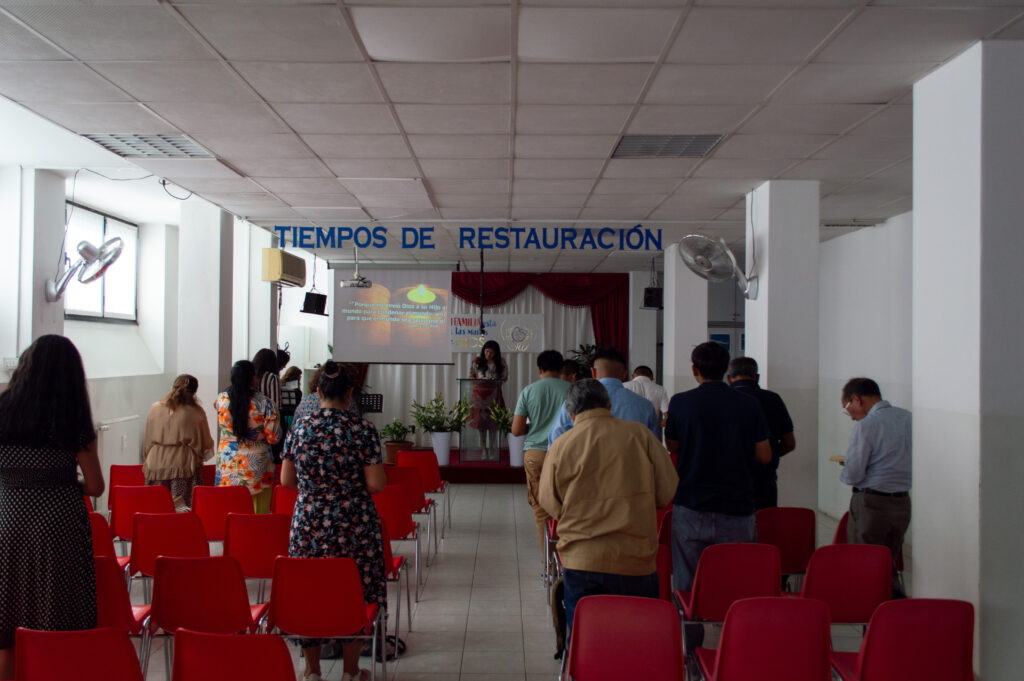
The following day I meet with Samuele at the Basilica di Santo Stefano Maggiore. It is my first ever Catholic Mass, dramatically set in an over 1600 year old church where people like Caravaggio were baptized. Not too shabby. Seats are filled with Latino families, each member crossing themselves before entering. Tourists trickle in and out throughout the mass, so I don’t feel so weird moving around and taking photos. A sermon in Spanish is recited by a priest with a slight French accent and songs with obvious roots in South America are sung by a group off in the left aisle. I stand and sit in unison with everyone else, unsure of what else to do until the mass ends. People meet in the side aisles around the various saints brought over from South America.
Samuele introduces me to Lota, a Filipina woman with a leadership role at the church. She is very friendly and full of energy, recounting how this is the first time in a long time she has to use English. We then meet some of the priests and go upstairs where I meet one-on-one with a woman named Carmen, who tells me the history of the Spanish mass.
Similar to Edwin’s story, Carmen says that Latinos began arriving in large numbers around thirty years ago at the start of the 1990s. People came from El Salvador, then Peru, then Ecuador. The first group met in a chapel on Copernico street where nuns would help recent immigrants find work. The first chaplain for Milan’s immigrants was Don Giancarlo Quadri, a man synonymous in Lombardy with care for immigrants. As the community grew, they decided to move to a theater and eventually to Stefano Maggiore around twenty years ago. As the Filipino community also moved into the space, numbers reached around 6,000, so multiple masses had to be established. The Spanish mass is culturally Latino, and the parish eventually got the same rights as a territorial parish. It has become a place for people who just arrived and have nowhere else to go. I am reminded of Samuele’s comment from the day I met him that the Catholic Church was the first welfare state.
These days Carmen is in charge of confirmations. She is also focused on making sure teenagers (2) with immigrant parents recognize that Italy is their country too, that you can choose the best parts of both Latino and Italian cultures. She extends this attitude to her work as an educator as well. Her job is to help immigrants find their place in Italian society, which she does by using four approaches. The first is helping people learn the Italian language. The second step Carmen takes is compiling documentation of a student’s educational achievements. This is crucial for receiving credit in Italian schools as an immigrant, especially since the school systems in Latin America are set up very differently. She then sets up two meetings per week where Carmen and the students she helps can chat and get help with homework. Lastly, Carmen makes sure her students are socializing. A big issue comes from people isolating when they feel out of place, so she makes sure her students are connected to sports teams, educational resources, and other activities.
Carmen heads off to a meeting and I go back down to talk to Lota who fills me in on the history of Filipino immigration to Lombardy. Like most immigrants, Filipinos began coming to fill the various roles involved with domestic work. These jobs are typically full time Monday-Saturday. Sunday then acts both as a day of rest and a day to catch up with your social community (3). Mass therefore became a meeting space for the Filipino community. I don’t know anything about Catholic hierarchy, so Lota breaks it down for me. There are nine Catholic Filipino communities and ten groups within the communities. Don Alberto Vitali is the parish priest and main Catholic figure overseeing the migrants in Milan. The Filipino community began meeting in a building on San Tomaso Street around 1988. Initially attended to by nuns, the Filipino community eventually asked for a priest who could speak Tagalog. At the time, there was only one in Italy, down in Rome at the Pontificio Collegio Filippino. Eventually, their requests were granted and the church kept growing. At first their space for one hundred parishioners became too small to fit the dozens coming in on Sunday. Even when they moved to Santo Stefano, there were too many people. This building that had sat empty for decades suddenly couldn’t keep up with demand. Three masses were established, ultimately becoming the four Tagalog masses you can find there today.
Samuele has to go, so I thank him for the tremendous help he afforded me, and then thank Lota for her openness and kindness, and then I head off.
2: I did not know prior to visiting Europe that birthright citizenship is only commonly practiced in the Americas, where basically everybody is descended from immigrants.
3: “Sunday you are free”
